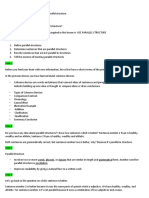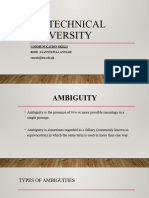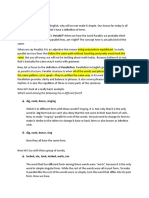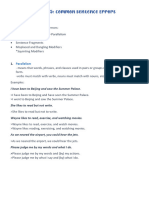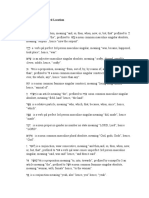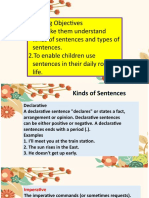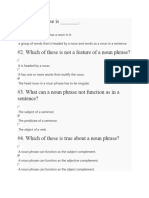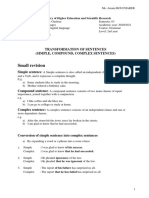0% found this document useful (0 votes)
23 views39 pagesLecture 1
This document covers the placement of modifiers and parallel structures in writing. It explains concepts such as misplaced modifiers, dangling modifiers, and faulty parallelism, providing examples and corrections for each. Additionally, it includes activities for practicing these concepts to enhance clarity and grammatical accuracy in writing.
Uploaded by
maiponggggggggCopyright
© © All Rights Reserved
We take content rights seriously. If you suspect this is your content, claim it here.
Available Formats
Download as PPTX, PDF, TXT or read online on Scribd
0% found this document useful (0 votes)
23 views39 pagesLecture 1
This document covers the placement of modifiers and parallel structures in writing. It explains concepts such as misplaced modifiers, dangling modifiers, and faulty parallelism, providing examples and corrections for each. Additionally, it includes activities for practicing these concepts to enhance clarity and grammatical accuracy in writing.
Uploaded by
maiponggggggggCopyright
© © All Rights Reserved
We take content rights seriously. If you suspect this is your content, claim it here.
Available Formats
Download as PPTX, PDF, TXT or read online on Scribd
/ 39






